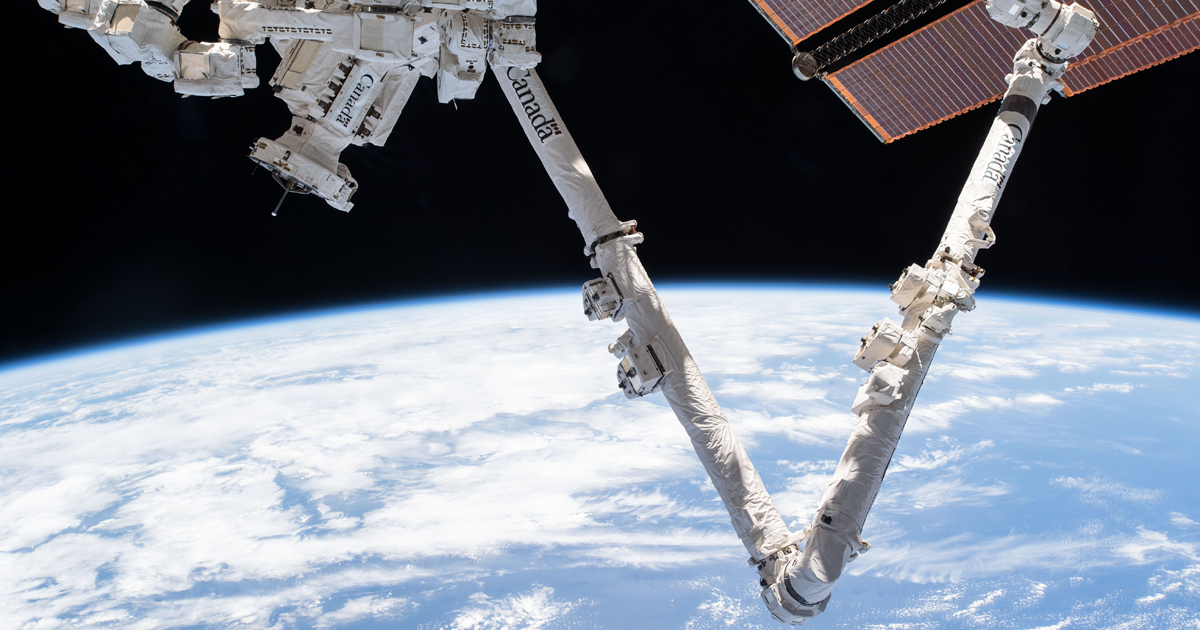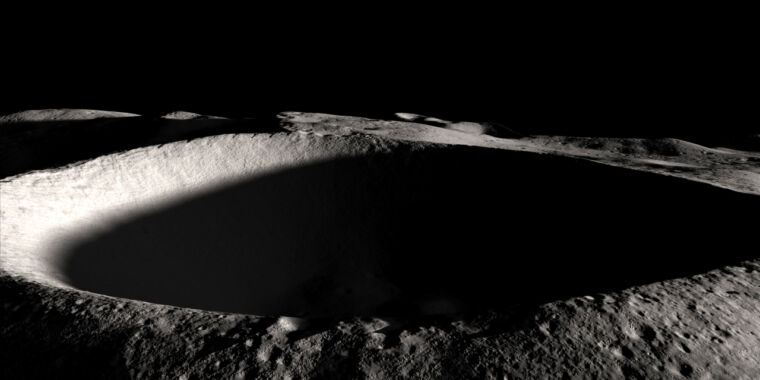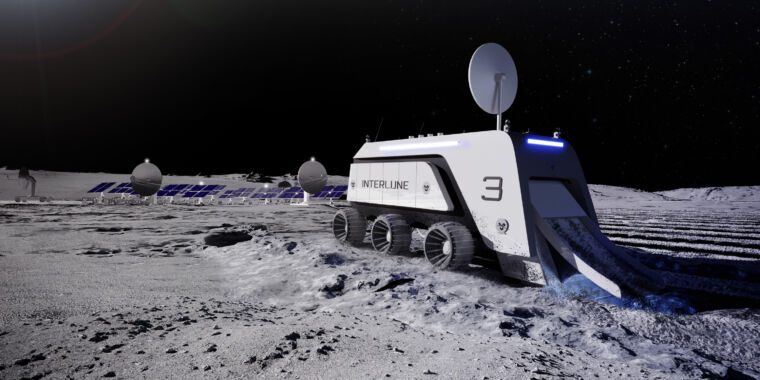Personally, I always thought lunar caves would be the perfect place to build human habitats. Seems they exist and the temperature is quite nice. Lava Tubes on the Moon Maintain Comfortable Room Temperatures Inside
Welcome to Tesla Motors Club
Discuss Tesla's Model S, Model 3, Model X, Model Y, Cybertruck, Roadster and More.
Register
Install the app
How to install the app on iOS
You can install our site as a web app on your iOS device by utilizing the Add to Home Screen feature in Safari. Please see this thread for more details on this.
Note: This feature may not be available in some browsers.
-
Want to remove ads? Register an account and login to see fewer ads, and become a Supporting Member to remove almost all ads.
You are using an out of date browser. It may not display this or other websites correctly.
You should upgrade or use an alternative browser.
You should upgrade or use an alternative browser.
The Moon Isn’t So Harsh A Mistress
- Thread starter Cosmacelf
- Start date
JohnnyEnglish
Member
Pretty certain there were ICES papers on this in the late '80s - good to see the idea resurrected.Personally, I always thought lunar caves would be the perfect place to build human habitats. Seems they exist and the temperature is quite nice. Lava Tubes on the Moon Maintain Comfortable Room Temperatures Inside
Dumping this here for lack of a better place: a video of NASA and KBR work using robots and modular components to build objects autonomously. It seems like it could be used anywhere off-planet. KBR is an engineering and construction spinoff from Halliburton, the oilfield service company. The pace of the robots is about one block every 20 minutes.
That's interesting... the "placement" robot kind of inchworms over the structure... a bit like the arm on the space shuttle.Dumping this here for lack of a better place: a video of NASA and KBR work using robots and modular components to build objects autonomously. It seems like it could be used anywhere off-planet. KBR is an engineering and construction spinoff from Halliburton, the oilfield service company. The pace of the robots is about one block every 20 minutes.
The interior one crawling through the structure to fasten it is cool... but obviously limited to hollow structures... which are probably what you want for having to transport to Mars...
I always thought they should have designed the exterior of the ISS such that they could walk the arm around on the surface, gripping strategically-placed mount points as it went. A sufficiently-dexterous arm could eliminate space walks. Well, they'd have to design everything for that kind of servicing.That's interesting... the "placement" robot kind of inchworms over the structure... a bit like the arm on the space shuttle.
I think the essential point is that robots can cooperate to build structure by using the structures as the work surface. Having a robot inside the structure is just a neat proof of concept.The interior one crawling through the structure to fasten it is cool... but obviously limited to hollow structures... which are probably what you want for having to transport to Mars...
Mike1080i
Member
They did. Canadarm2 has Latching End Effectors on both ends. There are multiple power and data grapple fixtures on the U.S. segment it can "inchworm" between, including the mobile base system that runs along the truss the solar arrays are mounted on. They also built Dextre, which Canadarm2 can pickup and use to perform some tasks that would have otherwise required an EVA.I always thought they should have designed the exterior of the ISS such that they could walk the arm around on the surface, gripping strategically-placed mount points as it went. A sufficiently-dexterous arm could eliminate space walks. Well, they'd have to design everything for that kind of servicing.

About Canadarm2
Talk about super strength! This Canadian robotic arm does tons of heavy lifting around the ISS.
That's interesting... the "placement" robot kind of inchworms over the structure... a bit like the arm on the space shuttle.
You know, I wrote this and then I thought later about it and realized it is indeed the arm on the ISS I was thinking about, as @Mike1080i refers to... my bad.
Another dump. An article about the US government trying to foster a lunar economy. As you might expect, there's nothing concrete to be pursued yet. I consider this a bit of silliness because any economic value that can come from the Moon will do so of its own accord. We're just not ready because we don't even know what we have to work with.

 arstechnica.com
arstechnica.com
I'm of the opinion that zero gravity is probably the environment that will provide some unique economic opportunities, and that the Moon will provide the best source of raw materials because of the shallowness of its gravity well. So, factories in lunar orbit. Time will tell if there's actually any economic potential out that way.

The US government seems serious about developing a lunar economy
You know the military is serious when the guy running the program is nicknamed "Orbit."
I'm of the opinion that zero gravity is probably the environment that will provide some unique economic opportunities, and that the Moon will provide the best source of raw materials because of the shallowness of its gravity well. So, factories in lunar orbit. Time will tell if there's actually any economic potential out that way.
Just saw this the other day:Another dump. An article about the US government trying to foster a lunar economy. As you might expect, there's nothing concrete to be pursued yet. I consider this a bit of silliness because any economic value that can come from the Moon will do so of its own accord. We're just not ready because we don't even know what we have to work with.

The US government seems serious about developing a lunar economy
You know the military is serious when the guy running the program is nicknamed "Orbit."arstechnica.com
I'm of the opinion that zero gravity is probably the environment that will provide some unique economic opportunities, and that the Moon will provide the best source of raw materials because of the shallowness of its gravity well. So, factories in lunar orbit. Time will tell if there's actually any economic potential out that way.

Mining helium-3 on the Moon has been talked about forever—now a company will try
"There are so many investments that we could be making, but there are also Moonshots."
Feels like for minerals/materials, it would have to be something that's just not in any abundance (or easily synthesized) on earth for it to be economically viable.
I, like you, wonder more about an economy based on unique aspects... no atmosphere in addition to the lack of gravity. Astronomical opportunities? The alternating extended solar day and night is a challenge, but I believe there are some permanently shadowed craters? Ginormous lunar telescope?
Absolutely. It's tough to say much more than that because we don't know what the economics of any of it will be. What's really needed is some brain-dead-obvious opportunity that would produce a Moon rush as everyone and their cousin tries to get to the Moon to grab unobtainium or whatever. That would put operations on the Moon, and then the blitz of experiments with low-gravity and zero-gravity manufacturing could begin.Feels like for minerals/materials, it would have to be something that's just not in any abundance (or easily synthesized) on earth for it to be economically viable.
Yeah, various governments and organizations will probably come up with science stuff to do on the Moon, but that's not going to get the economic ball rolling. McMurdo Station has never grown into anything more than a science station because it's a money sink.Astronomical opportunities?
I'm wondering if it simply allows an order of magnitude that you just can't cart out to L2... ship multiple mirror segments up that you assemble to make a telescope with a 50M diameter main mirror....Absolutely. It's tough to say much more than that because we don't know what the economics of any of it will be. What's really needed is some brain-dead-obvious opportunity that would produce a Moon rush as everyone and their cousin tries to get to the Moon to grab unobtainium or whatever. That would put operations on the Moon, and then the blitz of experiments with low-gravity and zero-gravity manufacturing could begin.
Yeah, various governments and organizations will probably come up with science stuff to do on the Moon, but that's not going to get the economic ball rolling. McMurdo Station has never grown into anything more than a science station because it's a money sink.
Similar threads
- Replies
- 92
- Views
- 4K
- Replies
- 23
- Views
- 2K
- Replies
- 80
- Views
- 8K
- Replies
- 33
- Views
- 3K


